Chitwa Chitwa Sabi Sands Safaris
Chitwa Chitwa Lodge 3 Day Safari
- 3 Days
From ZAR 48734
Chitwa Chitwa Lodge 4 Day Safari
- 4 Days
From ZAR 73101
Chitwa Chitwa Lodge 5 Day Safari
- 5 Days
From ZAR 97468
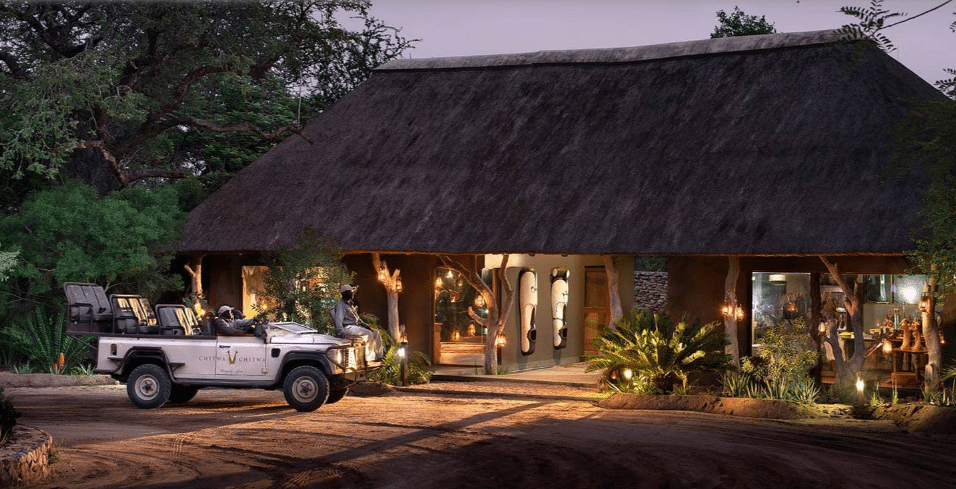
ABOUT CHITWA CHITWA
Chitwa Chitwa is one of 18 premier private game reserves in Sabi Sand Private Game Reserve which comprises 65 000 hectares of pristine bushveld boasting incredibly diverse fauna and flora. Sabi Sands forms part of the Greater Kruger National Park which in turn forms part of the Great Limpopo Transfrontier Park. The region is part of the Kruger to Canyons Biosphere which was designated by UNESCO as an International Man and Biosphere Reserve.
The luxury Sabi Sand safari lodge on the property offers the discerning traveller the ultimate safari experience coupled with luxurious accommodation and facilities designed in a style described as an eclectic fusion of contemporary European and Africa chic. The property overlooks the largest waterholes in the Sabi Sands, making it one of the best locations for continuous game viewing in the reserve.
Chitwa Chitwa Game Reserve is 5 500 hectares of pristine wilderness but benefits enormously from being part of a conservation gene pool that combines one of the largest national parks in Africa with 18 unfenced private game reserves. Sabi Sands shares a 50-kilometre unfenced boundary with the Kruger National Park and game roams freely across an area of some 2.5 million hectares of beautiful bushveld.
The reserve is home to the legendary Big 5 which includes elephant, rhino, buffalo, lion and leopard as well as an abundance of antelope, predators and the regular bush pack that are just as much fun to see as the famous fellows. Birdlife is prolific and the scenery is stunning which is why Chitwa Chitwa is a sought-after destination for a brilliant photographic safari.
What makes Chitwa Chitwa special is great care has been taken to balance opulent style and elegance with complete comfort and unpretentious warmth. It’s a destination for the distinguished wildlife traveller but still retains a home-from-home atmosphere for those used to the finer trappings of life.
A stay at Chitwa Chitwa revolves around unrivalled game drives and guided bush walks in a well-managed wilderness corridor and total relaxation in beautiful bushveld surrounds. Children of all ages are welcome at Chitwa Chitwa and are kept entertained with an array of educational activities.
The reserve contributes significantly to the protection and preservation of its wonderful natural resources and conservation is at the core of its operations. The Brink family is dedicated to the social upliftment of the community living adjacent to the reserve and set up The Dixie Trust to contribute to upskilling and educating people in the local villages. Guests are encouraged to take a tour of Dixie village and learn more about the way of life and culture of the local people.
CHITWA CHITWA EXPERIENCE
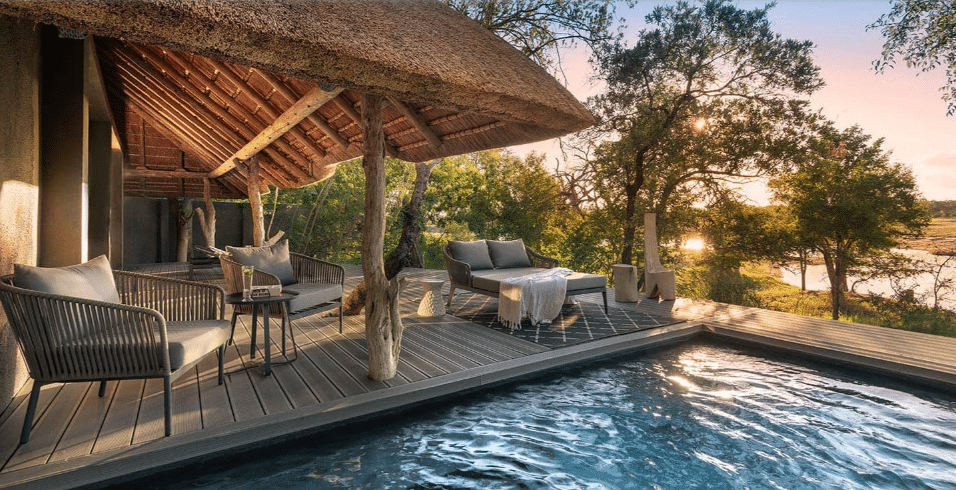
Chitwa Chitwa was originally a private safari retreat of the Brink family and has been enjoyed by the family as their exclusive bushveld haven for over 40 years. In 1991, the homestead was transformed into a private game lodge which is now renowned as a refined jewel in the Sabi Sands hospitality offering.
The name Chitwa Chitwa pays homage to an aging giraffe bull who spent much of his time at the edge of the massive lake in front of the lodge. He died years ago but his memory is captured in the magnificence and grace of Chitwa Chitwa.
Chitwa Chitwa falls within the Greater Kruger National Park which in turn falls within the Great Limpopo Transfrontier Park. The latter is known as a Peace Park and is a dynamic conservation initiative which unfolded across the southern African region. One of the main goals for The Great Limpopo Transfrontier Park is that local communities benefit from increased eco-tourism to the area.
The Great Limpopo Transfrontier Park links the Limpopo National Park in Mozambique; the Greater Kruger National Park in South Africa; and Gonarezhou National Park, Manjinji Pan Sanctuary and Malipati Safari Area in Zimbabwe. It also includes two areas between Kruger and Gonarezhou, namely the Sengwe communal land in Zimbabwe and the Makuleke region in South Africa which adds an additional 35 000 square kilometres.
Part of an iconic biosphere
Established in the early 2000s, the Great Limpopo Transfrontier park was created to support sustainable ecotourism across South Africa, Mozambique and Zimbabwe. It’s an exemplary process of partnerships between governments and the private sector and makes a significant contribution to creating what could be the world’s greatest animal kingdom.
This vast lowland savanna ecosystem is bisected by the majestic Lebombo Mountains which runs along the border between South Africa and Mozambique. Five major river systems cross this ecoregion. The four main landscapes include lowland savanna grassland plains in the majority of the region; a hilly granite plateau in the western region; the Lebombo Mountains; and the floodplain riverbank areas along the Save, Changane, Limpopo, Olifants, Shingwedzi and Komati rivers.
There are five major types of vegetation; Mopane woodlands and shrubveld in the northern portions, mixed bushveld in the southern half, sandveld in the southeastern areas of Mozambique, riverine woodlands mostly in Kruger and Gonarezhou, and seasonally flooded and dry grasslands in and around Banhine National Park.
The Great Limpopo Transfrontier Park also holds significant cultural importance. Stone-age artefacts and more recently Iron Age implements at many sites provide evidence of a very long and almost continuous presence of humans in the area. Early inhabitants were San hunter-gatherers who left numerous rock-paintings scattered across the region, while Bantu people entered about 800 years ago, gradually displacing the San.
Available evidence suggests that humans occurred at low density and were mostly confined to the more permanent river-courses. It is reasonable to assume from the continuous presence at some sites (Pafuri, for example) that humans and wildlife existed in harmony, with no major impact of humans on wildlife or the reverse.
The arid nature of the environment, together with an abundance of predators and diseases (e.g. malaria) would have played a role in preventing large-scale human population growth and settlement. Nevertheless, sophisticated cultures already existed by the 16th century, as evidenced by the Thulamela and other ruins near Pafuri in the Kruger National Park.
Unrivalled game viewing
Chitwa Chitwa Game Reserve is located in Sabi Sand Private Game Reserve which is regarded as one of the finest protected wildlife corridors in southern Africa. It’s made up of a group of 18 unfenced independent game reserves and spans some 65 000 hectares of savanna thornveld.
Officially named Sabi Sand Wildtuin (meaning ‘wilderness’ in Afrikaans), the premier wildlife sanctuary falls within the Greater Kruger National Park. There are no fences between the privately-owned reserves in Sabi Sands and the Kruger National Park and game moves freely through the wilderness region.
Sabi Sands is situated in the southwestern corner of the Greater Kruger National Park and shares a 50-kilometre border with Kruger Park. It has one of the richest game populations in the country and is renowned for its leopard sightings.
It is home to the Big 5 which includes elephant, buffalo, rhino, leopard and lion as well as an abundance of antelope and predators. Bird life is prolific with some 500 species recorded in the reserve; many endangered and rare bird species can be found in Sabi Sand.
Sabi Sands, as locals call it, is the oldest private nature reserve in South Africa and dates back to 1934. This premier game reserve is unashamedly marketed to the high-end traveller and offers wildlife enthusiasts the ultimate Big 5 Kruger Luxury Safari experience along with a selection of some of the most luxurious lodges in the region.
Exclusivity and low tourist numbers
The tourist footprint of the private game reserves in the Sabi Sands is low; considerably lower than in the Kruger National Park which suffers from a ‘queue to view’ scenario. There is no ‘self-drive’ option for game viewing in Sabi Sands and visitors explore the reserve in an open safari vehicle in the company of a professional game ranger and tracker.
Sabi Sands enforces a strict game viewing protocol which limits the number of open safari vehicles around animals. For example, only two game vehicles are allowed at a leopard sighting and three vehicles around a lion kill. In remote corners of Sabi Sands, visitors could be mistaken in thinking they’re the only people in the reserve. It’s the ultimate safari experience with such rare exclusivity.
Professional rangers and expert trackers
Game rangers and trackers working at private game reserves like Chitwa Chitwa are some of the best in southern Africa. They all have extensive bushveld experience and a vast knowledge of the fauna and flora of Sabi Sands. The Shangaan trackers are highly skilled at picking up animal spoor and spotting elusive game such as leopard. Game spotting on a night drive is a completely different skill. Sometimes all a tracker relies on is seeing the white glint of an animal’s eye.
You also have the option of going on a fascinating guided bush walk after the early morning game drive which you can pre-book with Chitwa Chitwa. It offers a completely different perspective on the bushveld and it’s a chance to learn more about the lesser-known animals that tend to be ignored on a hunt for the Big 5 as well as learning more about the cultural and medicinal properties of the trees and plants in the bush.
The Big 5 was the term given by hunters in the old days for the five safari legends which were feared the most on a hunting expedition. The group includes elephant, rhino, buffalo, lion and leopard. Today, the Big 5 are the animals safari tourists are the most keen to see.
The Big 5 shouldn’t be your sole focus because it’s just as much fun to sit at a waterhole and watch a pod of hippos wallowing in the water or watching a weaver bird steadfastly building a nest for its fussy partner in an Acacia tree. Ask you safari guide about the Small 5 and the Ugly 5.
Two major Lowveld rivers run through Sabi Sands. The Sabie River creates the southerly border of the reserve and the Sand River flows from the north west to the south east for about 50 kilometres. This permanent water source supports an incredible array of animals as well as water birds. In winter, the game tend to congregate close to the rivers which is excellent for game viewing.
Luxury safari accommodation
Private game reserves in Sabi Sands are unashamedly geared for the high-end market expecting luxurious accommodation in an incredible setting and an unrivalled safari experience. Chitwa Chitwa was transformed from a family safari retreat to one of the most elegant and sophisticated lodges in Sabie Sands. It’s a masterpiece of eclectic European style and African chic and manages to balance unbridled luxury with environmental harmony.
Guests have the choice of the Chitwa Suites which promise ultimate comfort in a superb bushveld setting, including The Charlsy Suite which is suited for families; and Chitwa House which offers complete privacy and exclusive hospitality.
Service is exemplary at Chitwa Chitwa and staff take great pride in creating the ultimate personalised safari experience for guests. Signature dishes prepared by dedicated chefs are legendary. Care is taken to cater for each person’s individual tastes and the team in the kitchen are happy to produce something out the ordinary for travellers with different culinary needs.
Chitwa Chitwa is a family-run establishment and guests enjoy the warmth and hospitality of the Brink family. Maria Brink is renowned for her creative talents and many of her original contemporary art pieces are displayed in the main lodge and suites. She has had a lifelong career in international fashion, jewelry and art which has attracted an international following. Maria’s creativity is inspired by her love of Francis Bacon’s works and life.
Award-winning establishment
Chitwa Chitwa has collected many international accolades over the year which recognise it as a prestigious safari destination for the discerning traveller.
The most recent accomplishment for Chitwa Chitwa was making it onto the Africa Freak Safari Guide for the “Top Ten Most Romantic Lodges in South Africa”.
International awards from 2016 and 2017 include:
- AfriStay: Top Valued Establishment Award 2017
- World Luxury Hotel Awards: Best Safari Lodge Winner 2017
- Haute Grandeur: Global Hotel Awards Winner 2017
- Haute Grandeur: Global Hotel Awards Winner 2016
- World Luxury Hotel Awards: Best Safari Lodge Winner 2016
Conservation at its core
The private game reserves of Sabi Sands are first and foremost conservation companies with Big 5 sightings and luxury hospitality being the major drawcards. The Brink family who have owned and operated Chitwa Chitwa for over 40 years uphold a passion for conservation and place it at the forefront of its business operations.
Chitwa Chitwa participates enthusiastically in Sabi Sands’ environment management programmes which include alien plant control, micro-catchment management to combat erosion, monitoring wildlife and habitat densities, anti-poaching initiatives and control of runaway fires.
Conservation is facilitated through education and this rides off the back of the social upliftment and empowerment of local communities. Community empowerment initiatives instituted by Chitwa Chitwa are managed by The Dixie Trust.
Empowering and harnessing the skills of the local community forms part of Sabi Sands’ ecotourism model. A special excursion for international guests is a visit to a local village. It’s an incredible opportunity to get to know more about the local culture and the communities way of life.
Wildlife conservation is highly dependent on unity between animals and humans. Villagers interacting with tourists helps them see firsthand the benefit of being part of the reserve’s conservation initiatives because they ultimately benefit from the money generated through safari tourism.
Community outreach projects run by Sabi Sand Private Game Reserve put education at the forefront of what they do. They also play a role in small business creation and support, housing and medical healthcare. The fight against AIDS is a priority, particularly as the epidemic destroys the fabric of families by creating child-only homes with no parents to care for children orphaned by the disease.
Sunrise and sunset game drives
The Chitwa Chitwa experience is sandwiched between two glorious game drives. The daily routine is not set in stone but follows the general safari pattern of an early excursion in the bush, delicious meals and complete relaxation and an late afternoon game drive with sundowners at a special vantage point. The day ends dining under the stars at the open boma gazing at the bright stars overhead and being lulled by the beautiful sounds of the nocturnal bush life.
The summer programme starts half an hour earlier than the winter routine.
05h00
Wake up, meet at lodge for tea/coffee and homemade rusks before departing for a sunrise game drive
08h45
Return to camp for a hearty breakfast
10h00
Guided bush walk with a professional ranger or enjoy the luxury facilities in camp
13h00
Lunch served outdoors under a thatch lapa overlooking the lake
16h00
High Tea at the main lodge before departing on a late-afternoon game drive and sundowners in the bush
19h30
Return to camp, freshen up and join other guests at the par for aperitifs
20h30
Dinner is served under the stars at the outdoor boma
Tour of Dixie Village
Chitwa Chitwa is intricately linked to the Dixie community located on neighbouring land close to Gowrie Gate. For many years, the Brink family has supported the Dixie community through The Dixie Trust and has cultivated a unique partnership that serves to improve the lives of local people and empowering them with valuable skills and education.
Chitwa Chitwa invite you to join the Cultural Village Excursion because it offers guests an incredible opportunity to learn more about the way of life and culture of the Dixie community and the chance to interact with the people in the region. It’s a memorable and insightful village tour and the Dixie people will leave an indelible mark on your safari experience.
The Cultural Village Excursion takes about 2 hours and is highly recommended for overseas guests to gain a different perspective on a safari tour of Africa.
Eco initiatives driving operations
Like all luxury lodges in Sabi Sands, the goal of environmental initiatives implemented at Chitwa Chitwa is to reduce its eco footprint and promote sustainable tourism.
Chitwa Chitwa is proud to be a benchmark green-eco lodge in the Sabi Sands. The Brink family has implemented a number of eco-friendly initiatives in its commitment to run a luxury lodge that has minimum impact on the vulnerable balance of the bushveld environment.
These include:
- Lighting: Using LED and compact fluorescent lighting technology in 75% of the lodge. Chitwa House is completely free of incandescent lights.
- Water heating: Chitwa’s villas are retrofitted with solar water heating systems using evacuated tube solar collectors. “Geyserwise” intelligent electronic devices improve the efficiency of our solar heaters. All exposed piping is insulated for maximum heat retention.
- Pool Pumps: Chitwa Chitwa has replaced all swimming pool pumps with “VF Intelliflow” variable speed pumps which reduces power consumption by 90%.
- Grey water recycling: A grey water recycling system has been installed in the laundry; together with eco-friendly washing machines, the recycling system enables Chitwa Chitwa to reuse all laundry water for garden irrigation.
- Waste & Refuse Removal: All waste is removed from the property weekly and taken to an approved waste management site; no waste is buried or burned on site.
- Air conditioning: All air conditioners have been fitted with “airco-saver” energy savers which reduces energy consumed by air conditioners by between 20-35%.
- Detergents & cleaning agents: Cleaning materials used at Chitwa Chitwa are ecologically approved and all washing powders are free of phosphate.
- Natural thatch roofs: Chitwa Chitwa uses natural highveld grass for roof thatching with is a natural insulator; it acts as an insulation to reduce interior heat in summer and heat loss in winter which means there is less need to use energy-consuming air conditioners and heaters.
Photographic safaris
Chitwa Chitwa is located in a premier private game reserve which is home to the Big 5 and rich in fauna and flora. Sabi Sands itself is world-renowned as a premier photographic safari destination and Chitwa Chitwa more so because of its unique location overlooking the largest lake in the game reserve.
The beauty of a visit to Chitwa Chitwa is you can hire photographic equipment ideally suited for wildlife and bird photography. The lodge uses a reputable photographic specialist company in Nelspruit for the hire of cameras and lenses.
The reason you may want to hire photographic equipment is standard ‘point-and-shoot’ cameras won’t give you the best shots, although many have good zoom ranges. You generally need a longer lens for wildlife photography to catch an animal in action or a bird in flight. Anything over 200mm is good; preferably with an image stabiliser.
ACCOMMODATION AT CHITWA CHITWA
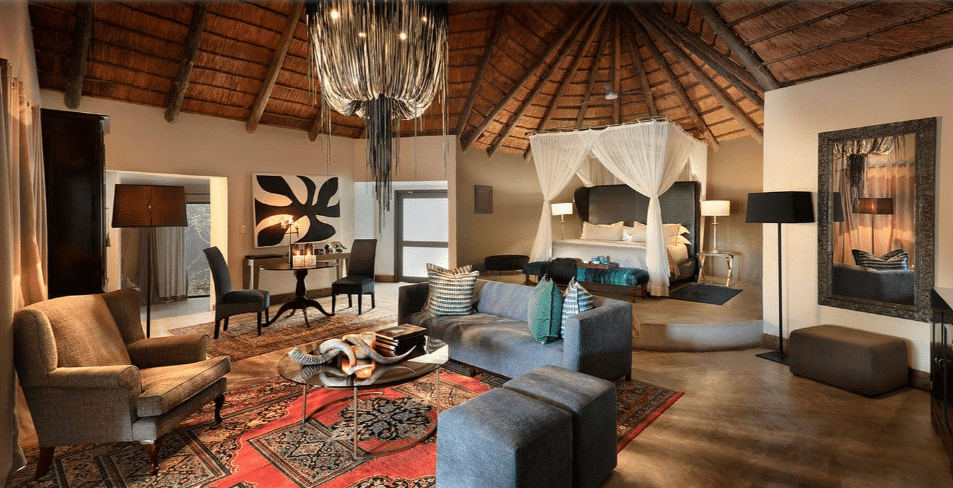
Chitwa Chitwa lies nestled in a grove of mature woodland trees and overlooks the largest lake in the exclusive Sabi Sands. Guests have a front row seat to a procession of game and water birds who spend lazy hours on the edge of the water, particularly in the dry winter months.
Guests have the choice of 6 individually-decorated air-conditioned luxury suites, The Charlsy Suite which is suitable as a family unit or the strikingly beautiful Chitwa House.
The style and design of the suites and house is unashamedly lavish yet unpretentious. Comfort trumps opulence and care has been taken to re-create a ‘home-from-home’ environment in keeping with the warmth and character of the original family homestead.
Signature features of accommodation at Chitwa Chitwa are spacious bedrooms and living areas, stand-alone bathtubs and large outdoor decks with stunning views of the unspoilt bushveld surrounds. Décor is contemporary and luxurious yet elegant and unaffected.
The main lodge boasts a beautiful bar and lounge area and is designed in such a way that the surrounding wilderness appears to blend into the stylish interior. There’s a cosy library with a fireplace and internet connectivity.
Other facilities at Chitwa Chitwa include a fully-equipped gym and a spa treatment centre. The underground wine cellar at Chitwa Chitwa is built around a natural granite rock floor and the perfect place to spend some time sampling its premier stock because it boasts a selection of the finest wines from best wine estates in the Cape Winelands.
Breakfast and lunch are served next to the pool in the thatched lapa overlooking the lake on warm days or in an elegant dining room when it is cooler. Dinner is served under the stars in the open-air boma around a roaring firepit lit by paraffin lamps.
Children of all ages are welcome at Chitwa Chitwa. Children under 6 years are not allowed on game drives unless a safari vehicle is booked on an exclusive-use basis.
Chitwa Suites
The 6 luxury suites at Chitwa Chitwa are positioned to make the most of the spectacular view and overlook a massive lake. Each suite has a spacious lounge area which leads out onto a private viewing deck with its own plunge pool. It’s an excellent vantage point for game viewing and bird watching after a long morning spent exploring Chitwa Chitwa.
The luxury suites are unusually spacious and can accommodate up to 2 extra beds for children under the age of 12 years staying with their parents. They are air-conditioned with a luxurious ensuite bathroom and the modern conveniences of a high-end safari lodge.
The Charlsy Suite
The Charlsy Suite is suited for a family of 4 or two couples. It has two gorgeous inter-leading ensuite bedrooms joined by a comfortable sitting area. An extra bed can be added for an additional child under the age of 12 years.
Features include an indoor/outdoor shower, huge fireplace, complimentary mini-bar and tea/coffee-making facilities and an iPod docking station.
The Charlsy Suite leads out onto a large outdoor deck with a private pool and a panoramic view of the surrounding bushveld.
Chitwa House
Chitwa House sleeps 4 people in two spacious bedrooms. It offers guests an intimate and private safari experience in beautiful bushveld surrounds overlooking a massive lake. It’s geared for the discerning traveller who wants greater privacy and exclusive hospitality for family or friends.
Guests staying at Chitwa House are looked after by an experienced house butler and hosted by a professional game ranger. They have exclusive access to a dedicated open safari vehicle and an expert game tracker.
Chitwa House is renowned for its dramatic beauty which embraces an African chic theme with lashings of modern European elegance. It consists of two well-appointed ensuite bedrooms each with a private deck and indoor/outdoor shower.
The spacious lounge and dining area leads out onto an enormous outdoor deck with a sparkling swimming pool and a panoramic view over the lake.
Guests enjoy delicious meals prepared by a private chef in a fully-equipped kitchen. Complimentary facilities include a well-stocked mini-bar and tea/coffee-making facility. There’s a large flatscreen television in the lounge area with satellite channels.
CHITWA CHITWA FAST FACTS
- 6 individually air-conditioned luxury suites
- 2-bedroom family suite
- 2-bedroom luxury house
- central lounge, bar and dining area
- sunset deck with panorama views of the pristine bushveld
- rim-flow infinity swimming pool
- outdoor boma and firepit
- cosy library with reference material and books and internet connectivity
- safari boutique stocked with homemade African memorabilia
- fully-equipped gym
- spa offering authentic African treatments for ultimate relaxation
- children of all ages welcome
- children 6 years and older allowed on game drives
TOURIST DESTINATIONS CLOSE TO CHITWA CHITWA
There are a number of popular tourist attractions located within reasonable distance from Chitwa Chitwa Game Reserve which are worth a visit if you have a day to spare.
Kruger National Park
Chitwa Chitwa is located in Sabi Sand Game Reserve which shares an unfenced border with the Kruger National Park. Guests have easy access to South Africa’s largest national park.
This iconic protected wildlife region comprises 2 million hectares of unrivalled biodiversity. Exceptional safari excursions are a major drawcard but the wilderness belt is also rich in history and archaeological sites.
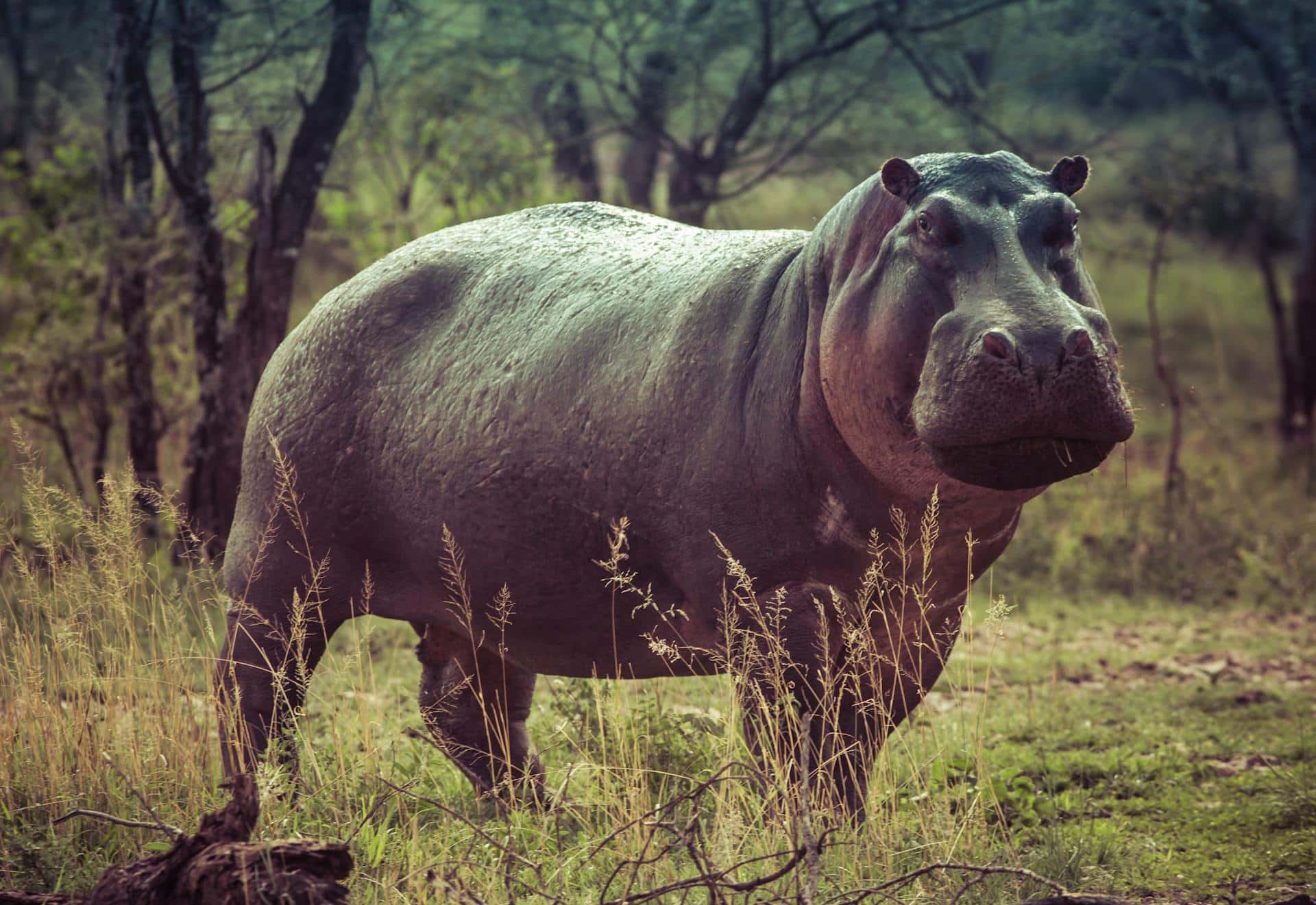
Moholoholo Wildlife Rehabilitation Centre
Take a day tour to Moholoholo Wildlife Rehabilitation Centre and meet several of Africa’s finest wildlife ambassadors. The centre is a safe haven for abandoned, injured and poisoned wildlife and birds of prey; some of which are healed and re-introduced to the bush, while others take up permanent residency because they are too badly damaged to fend for themselves.
You’ll see a wide array of animals at Moholoholo; from lion, leopard, serval, cheetah and hyena to Stoffel the famous honey badger as well as vultures, eagles and other magnificent birds of prey. The centre plays an extremely important conservation role, has a very successful breeding programme and is actively involved in anti-poaching initiatives.
The centre is entirely self-funded and relies on the support of visitors and generous donors. There is a small fee for guided tours which last about two hours. Your visit to Moholoholo Wildlife Rehabilitation Centre helps keep this incredible facility going.
Hoedspruit Endangered Species Centre (HESC)
HESC is a non-profit organisation which runs a successful breeding and research programme and plays a vital role in protecting endangered species in Africa. It is world-renowned for the role it has and continues to play in protecting dwindling predator populations in southern Africa.
The centre provides a safe haven for orphaned, sick and injured animals and has set up an impressive education centre where the general public and school children can learn about endangered wildlife species and interact with them. HESC plays a major role in assisting anti-poaching initiatives, in particular, saving our precious rhino from extinction. HESC is based at Kapama Game Reserve which is a short drive from Royal Malewane. A visit to HESC exposes guests to the incredible work researchers and conservationists are doing in the field; it’s a chance to interact with the animals on a closer level and helps towards raising much-needed funds for conservation and anti-poaching initiatives.
Helicopter flip
Hoedspruit Helicopters is the only scenic helicopter charter company operating in Hoedspruit. Contact them directly for a one-of-its-kind helicopter flip over the majestic Drakensberg mountain range and the Blyde River Canyon. Gain a different perspective of the lush Lowveld from high up in the air.
Blyde River Canyon Cruise
Blyde River Canon is the third-largest canyon in the world and the largest ‘green’ canyon in the world. You’ll enjoy an interpretation tour of the canyon which takes you to the rare living Kadishi Tufa waterfall; a fascinating 200-metre high natural phenomenon which builds up and lays down tufa rock as a result of a chemical reaction which precipitates cultrate out of the reaction between plant, water and rock.
A canyon cruise is awe-inspiring; the steep cliff faces tower above you while the boat cruises in the shadow of the Three Rondavels (a mountain landscape shaped like three small huts). The tour takes 1 hour 30 minutes and departs from the Blyde River Dam jetty which you get to from Swadini Forever Resort.
Explore Hoedspruit
Hoedspruit is the largest town in the region and a thriving tourism hub. It’s grown so much in the last few years that it’s now a destination on its own. A modern shopping centre has just gone up and you’ve got a choice of a number of great restaurants, coffee shops and pubs. It’s where the local farmers and game farm owners come to shop and meet friends and the town’s packed with tourists either passing through or spending a few days in town.
Hoedspruit lies nestled in a fertile agricultural valley at the foot of the majestic Klein Drakensberg, which means ‘Small Dragon Mountain’ in Afrikaans. It lies on the railway line which links Tzaneen in the north-west with Kaapmuiden in the east.
The town got its name – which means ‘hat creek’ in Afrikaans – from an intrepid explorer who allegedly made the long and arduous trek over the Drakensberg mountains, down into the scorching Lowveld. When he reached the cool waters of the Sandspruit River, he threw his hat into the creek and declared he would settle there.
There’s a lot to do in and around Hoedspruit; plan to spend at least a day exploring the area. Most trips to Hoedspruit end at one or other restaurant or pub where the locals will greet you warmly and convince you to drink up and stay awhile.
Panorama Route tour
If you are driving to or from Royal Malewane; one way at least should go via the Panorama Route. It’s an incredibly scenic route with spectacular views around every corner; taking you from Hoedspruit via the historic towns of Graskop and Pilgrim’s Rest to the town of Sabie. It tracks the ancient paths of gold diggers who came to the area during the gold rush to seek their fortune.
An iconic feature along the Panorama Route is Blyde River Canyon. It’s the third-largest canyon in the world and the largest ‘green’ canyon in the world. Other highlights along the way include God’s Window, a breath-taking viewpoint on the Drakensberg escarpment; the Pinnacle, a rocky outcrop which some people call God’s Finger; and Bourke’s Luck Potholes, a beautiful and strange natural phenomenon where river water has over centuries eroded the rocks and created perfectly formed smooth potholes and unusual sculptures.
Stop for pancakes at the legendary Harry’s Pancakes in Graskop or delicious craft beer at the Sabie Brewing Company.
If you have time, enjoy the ride of your life on Misty Mountain’s Long Tom Toboggan which is located on Long Tom Pass. It’s a 1.7 kilometre track that winds down a mountain slope at speed; it’s the longest toboggan run in Africa and a huge amount of fun for children and adults.
MORE ABOUT SABI SANDS
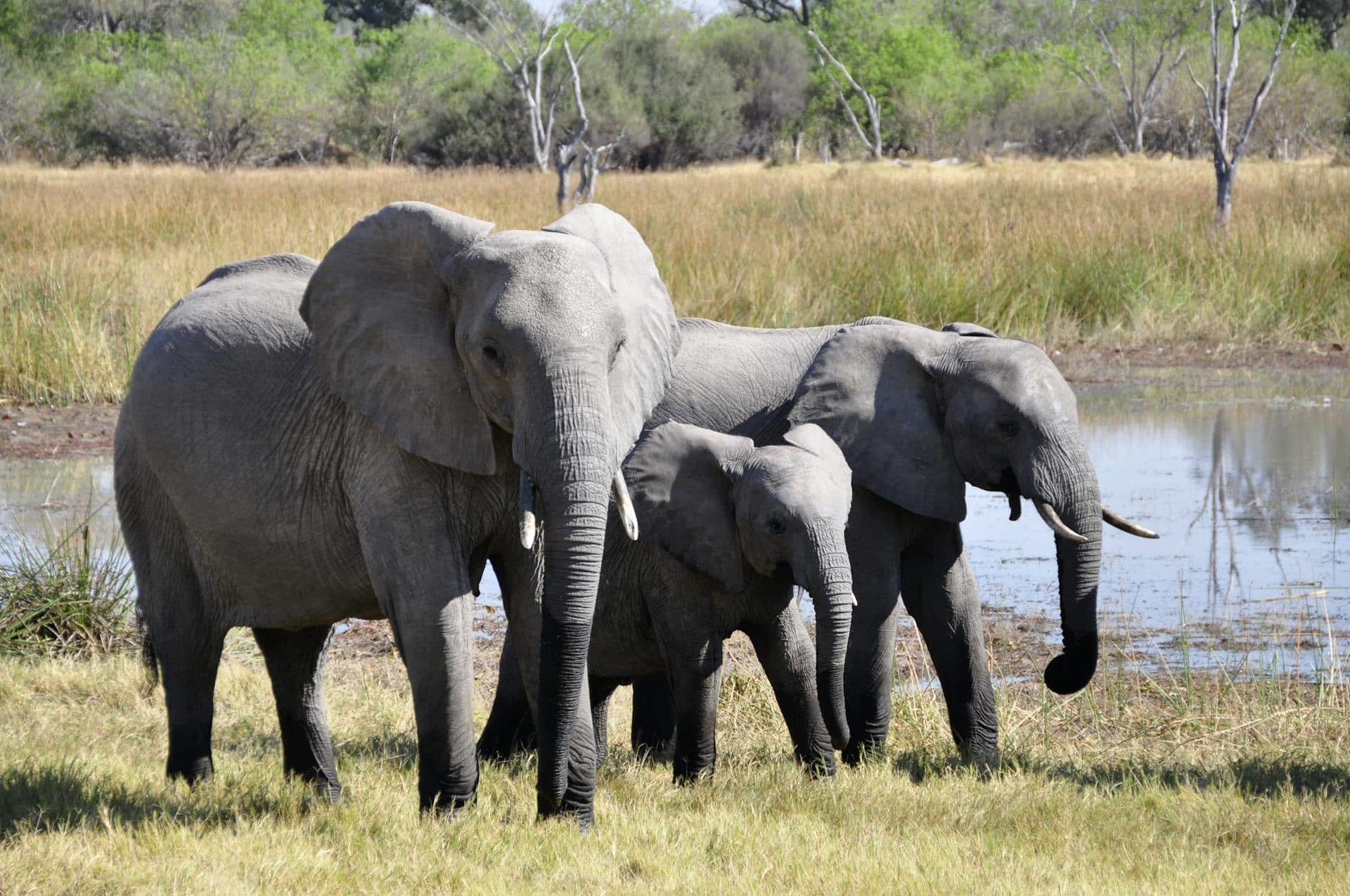
Chitwa Chitwa Game Reserve lies within the boundaries of the Sabi Sands Game Reserve but is the only private game reserve in the Greater Kruger National Park which is not a member of the Sabi Sand Wildtuin Association. It still benefits greatly from a close relationship with its immediate neighbour and a shared animal gene pool and traversing rights.
The Tsonga people occupied the land before it was established as a private game reserve and were forcibly removed in the creation of the wildlife sanctuary. The Nwandlamhlarhi Community successfully reclaimed Chitwa Chitwa game reserve as their own land in 2015. A negotiated settlement saw the community receive a massive payment in lieu of the private game reserve remaining in the hands of the current operators.
Sabi Sand Game Reserve is regarded as one of the finest game reserves in southern Africa. It is made up of a group of private game reserves and spans some 65 000 hectares of savanna thornveld. Officially named Sabi Sand Wildtuin (meaning ‘wilderness’ in Afrikaans), the premier wildlife sanctuary falls within the Greater Kruger National Park.
There are no fences between the privately-owned reserves in Sabi Sands and the Kruger National and game moves freely through the wilderness region.
Sabi Sand Game Reserve, or Sabi Sands as locals call it, offers wildlife enthusiasts the ultimate Big 5 safari experience along with a selection of some of the most luxurious safari lodges in South Africa. It is the oldest private reserve in South Africa and dates back to 1934.
The 65 000 hectares of wilderness consists of a patchwork of 18 unfenced private game reserves including world-renowned places such as Londolozi, Exeter, Sabi Sabi, Singita and Richard Branson’s Ulusaba. Sabi Sands premier safari lodges and unparalleled bushveld competes with the likes of the Masai Mara.
It is world-renowned as a premier destination for wildlife photography and it’s paradise for bird watchers. Luxury accommodation combined with pristine bushveld in one of the richest biodiversity regions in southern Africa puts Sabi Sand Game Reserve on the bucket list of well-heeled travellers from around the world.
Access to the private reserves in Sabie Sands is restricted to guests staying at the luxury lodges on the properties which promises visitors exclusivity to game sightings and privacy at the lodges.
Sabi Sands is situated in the southwestern corner of the Greater Kruger National Park and shares a 50-kilometre border with Kruger Park. It has one of the richest game populations in the country and renowned for its leopard sightings.
Sabi Sands is home to the Big 5 which includes elephant, buffalo, rhino, leopard and lion as well as an abundance of antelope and predators. Bird life is prolific with some 500 species recorded in the reserve; many endangered and rare bird species can be found in Sabi Sand.
The reserve was named after two mighty rivers that flow through the protected wildlife reserve. The Sabie River runs along its southern boundary and the Sand River flows from northwest to southwest. The Sabie River is part of the Komati River System and has a catchment area of some 6 320 square kilometres.
Sabie River is one of the most biologically diverse rivers in South Africa and an excellent source of quality water for humans and animals. Sabie River rises in the Drakensburg range of mountains and flows eastward through Mpumalanga Province to the low-lying bushveld regions. It crosses the Greater Kruger National Park and flows on to Mozambique where it exits into the massive Corumana Dam.
The two major rivers are a contributing factor to Sabi Sands being a sought-after safari destination. The private enterprise boasts over 145 species of mammal, 110 reptile species and 30 plus amphibian species aswell as 500 plus bird species and over 330 tree species.
The area is not only rich in game but also cultural history with many archaeological sites on the reserve bearing testimony of inhabitants from as far back as the Stone and Iron Age.
Sabi Sands is unashamedly marketed to the high-end traveller. There are marginally cheaper lodges but staying at Sabi Sands is still way out of the budget for your regular South African wildlife enthusiastic. This exclusivity offers guests spectacular game viewing sightings as congestion around animal sightings and kills is negligible and strictly controlled by game viewing protocols.
The only issue with visiting Sabi Sands is it is located in a malaria area. It’s considered a low-risk malaria region and the safari lodges take all precautions to limit mosquito bites and irritations. Consult your GP or a travel clinic for information on taking anti-malaria tablets before arriving at Sabi Sands.
Once back home or during the remainder of your holiday, watch out for symptoms of malaria which includes extreme headaches and fever, much the same as the start of a bad case of flu. See a doctor immediately if you experience any of the malaria symptoms ten days after going to a malaria area.
Where is Sabi Sand Game Reserve?
Sabi Sand Game Reserve is located adjacent to the Kruger National Park in the Mpumalanga Province of South Africa. It lies in the southwestern corner of what is known as the Greater Kruger National Park. There are three entrances into Sabi Sands: Newington Gate in the west, Gowrie Gate in the far north and Shaw’s Gate in the south of the private reserve.
History of Sabi Sand Game Reserve
The original Sabie Reserve was proclaimed in 1898. The man behind this iconic initiative was the president of the Transvaal Republic, Paul Kruger. He proposed the region be declared a protected wildlife sanctuary because of concern over unchecked hunting and rampant poaching. It would be some 12 years later that Paul Kruger’s proposal finally came to fruition and South Africa’s precious wildlife were provided with a safe haven to roam freely.
The area between the Sabie and Crocodile rivers was named Sabie Reserve and declared a wildlife sanctuary in 1898. Hunting was severely protected and conservation programmes initiated to boost depleted game numbers.
The National Parks Act was proclaimed in 1926 and Sabie Reserve and Shingwedzi Reserve were combined to become the Kruger National Park. Under this act, the wildlife sanctuary became a state sponsored national reserve and private landowners whose farms fell with the Sabie Reserve were excised from the Kruger Park.
In 1948, the private landowners owners set up a formal association to amalgamate the private reserves that bordered the southwestern boundary of the Kruger. Sabi Sand Private Reserve was created and would later be renamed Sabi Sand Wildtuin (meaning ‘wilderness’ in Afrikaans). Of that group of pioneering private game reserve owners, six families still own land in the Sabi Sands Game Reserve with third and fourth generations still living off the land.
Fences were erected between the Sabi Sand and the Kruger National Park in 1961 because of the threat of foot and mouth disease and hunting concessions on the private lands adjacent to the Kruger. In 1993, after exhaustive negotiations, the fences between Sabi Sand and the Kruger National Park were taken down and the Greater Kruger National Park was established as an expansive wilderness region.
The land that Sabi Sands Game Reserve now occupies was previously used for subsistence farming, mostly cattle farms and some tropical fruit farming. There was a shortage of water at the time and private landowners assisted local communities by putting in boreholes and dams. These boreholes and dams were kept intact when Sabi Sands became a private game reserve and are a valuable source of permanent water supply for the wildlife.
Sabi Sand Game Reserve is home to landowners who care passionately about conservation and the well-being of communities living adjacent to the reserve. Environmental management programmes and studies include, among others; alien plant control, micro catchment management to combat erosion, monitoring wildlife and habitat densities, anti-poaching and control of runaway fires.
Most luxury lodges in the Sabi Sands have initiated their own social responsibility programmes geared to uplift neighbouring communities as well as eco initiatives to reduce their environmental footprint.
Rich in cultural history
The Greater Kruger National Park is rich in cultural heritage and is as popular for its archaeological wonders as it is for its wildlife. There is ample evidence in the Kruger Park and Sabi Sands that inhabitants from the Stone Age and Iron Age lived in or passed through the region. This includes Stone Age artefacts, Bushmen paintings and trading artefacts linked to the Arab, Portuguese and Dutch traders that traversed the region many moons ago.
The Voortrekkers passed through the game-rich area as well as the Shangaan tribe who were fleeing tribal territory wars with King Shaka and the Zulus. Ancient traders the likes of Joäo Albasini crisscrossed the region, creating a network of trading routes which started in Lourenço Marques (now Maputo in Mozambique) and reached inland as far as the Lowveld and even the Great Zimbabwe Ruins.
MORE ABOUT GREATER KRUGER
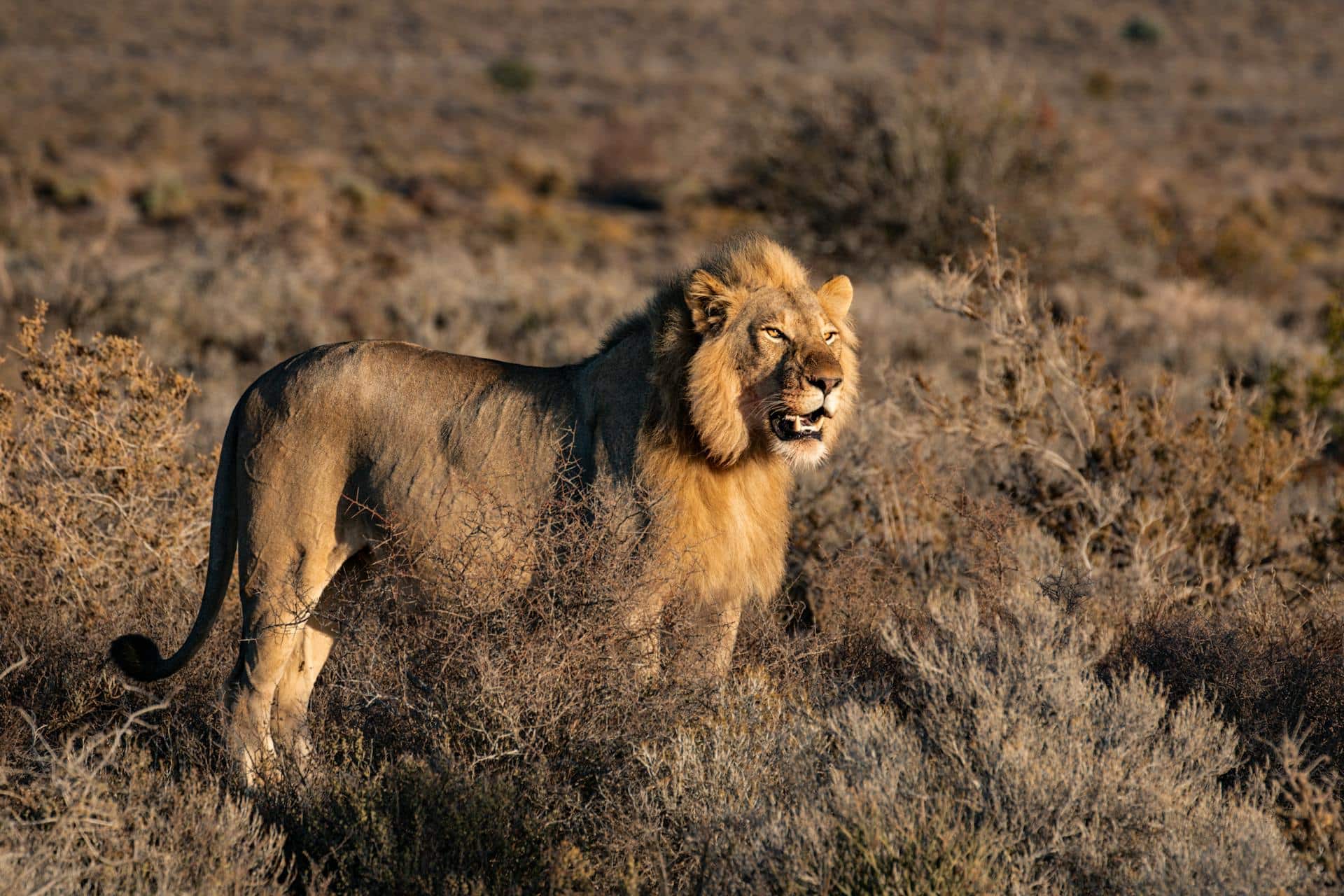
Chitwa Chitwa and Sabi Sand Wildtuin fall within the Greater Kruger National Park which, in turn, falls within the internationally-declared Kruger2Canyons UNESCO Man and Biosphere and within the Great Limpopo Transfrontier Conservation area (GLTP Treaty of 2002).
The Kruger National Park is one of the largest game reserves in Africa. It is situated across the Limpopo and Mpumalanga provinces of South Africa, and its borders stretch up to Zimbabwe in the north and Mozambique in the east. It was known in 1898 as the Government Wildlife Park; later became known as Sabi Game Reserve and then the Kruger National Park in 1926.
Kruger National Park is the core of the Kruger 2 Canyons and Vhembe UNESCO Man and Biospheres, and the core of the Great Limpopo Transfrontier Conservation Area (GLTP Treaty, 2002).
The Kruger to Canyons (K2C) Biosphere Reserve was registered in September 2001 in Paris by UNESCO. It became the 411th Biosphere Reserve site to be registered in 94 countries worldwide and acknowledged for its global significance.
The K2C Biosphere Programme is an extensive community-driven initiative that bridges the Limpopo and Mpumalanga provinces in South Africa. It is also the interface of the Eastern Transvaal Drakensberg Escarpment and the Central Lowveld.
K2C has 1.4 million hectares dedicated to long-term conservation; 989 000 hectares of formally-protected ecozones (state-owned reserves) and 400 000 hectares of conservation land (privately-owned game farms). The entire registered Biosphere Reserve spans some 2.5 million hectares.
Vhembe Biosphere Reserve is located in the north-east of South Africa near the border with Botswana, Mozambique and Zimbabwe. The reserve includes the northern part of Kruger National Park, Mapungubwe National Park and World Heritage site, several Provincial Nature Reserves, two recognised centres of biodiversity and endemism (Soutpansberg and Blouberg), and the Makgabeng Plateau, which contains more than 1 000 rock art sites.
The area has a relatively large and rapidly growing human population with a high unemployment rate. This has a severe negative impact on natural resources, which are harvested in an unsustainable manner. The role of the conservation programmes is to manage the needs of communities living adjacent to the wildlife sanctuaries and the protection of South Africa’s valuable natural resources.
The luxury safari lodges of Chitwa Chitwa and Sabi Sands are committed to ‘Responsible Tourism’ which is about ‘making better places for people to live in and better places for people to visit’. Responsible Tourism requires Sabi Sands operators to make tourism more sustainable where both people and natural resources in the region benefit.
GETTING TO SABI SAND GAME RESERVE
BY AIR
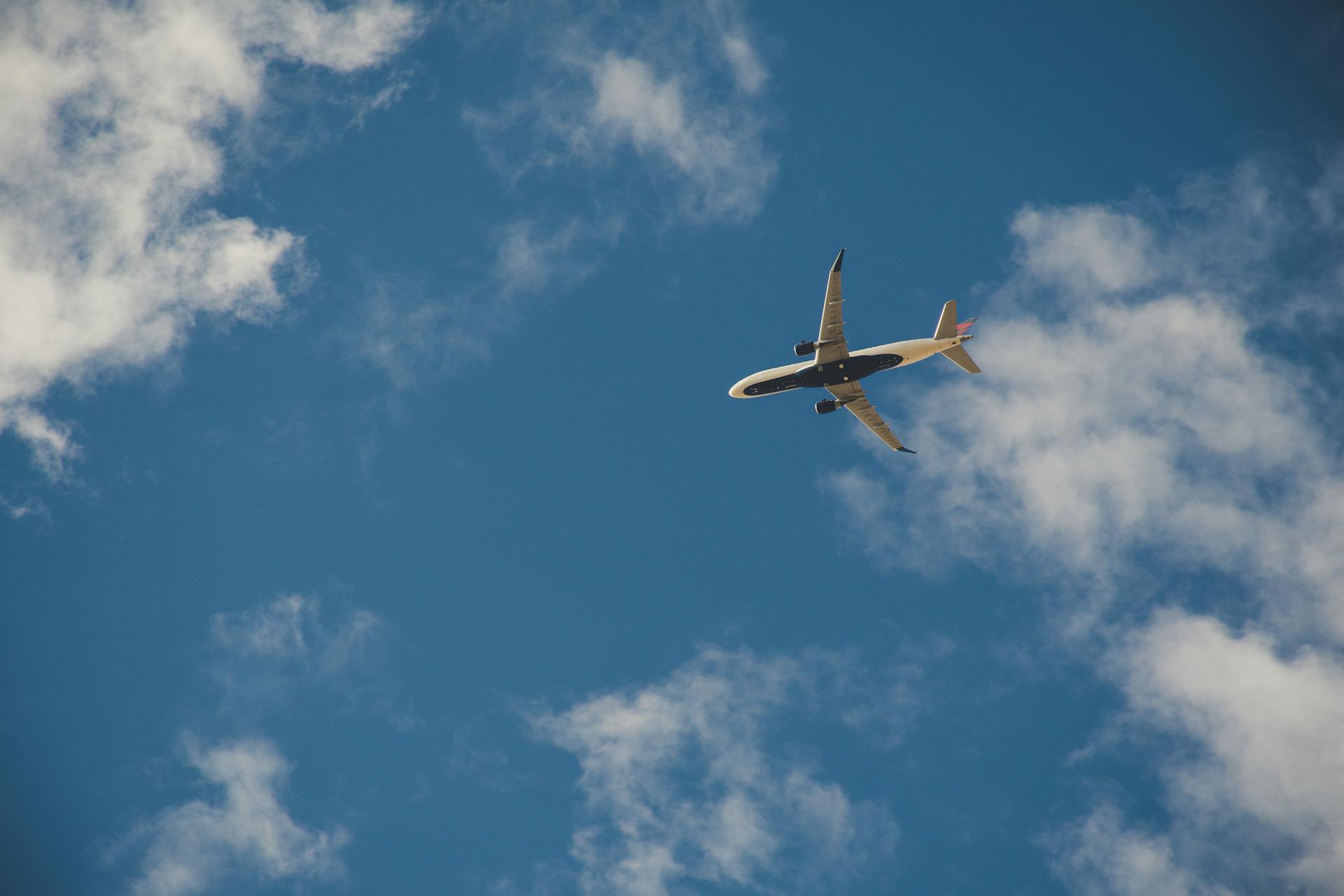
The most convenient mode of travel to Sabi Sands from OR Tambo International Airport in Johannesburg is by making use of a shuttle flight. Federal Air (FedAir) services most individual lodges and airstrips in the reserve from both Johannesburg and Kruger Mpumalanga International Airport.
There are two daily shuttle flights to Sabi Sand Game Reserve from OR Tambo International Airport.
FedAir Johannesburg to Sabi Sands schedule:
Depart OR Tambo at 10h30; arrive at Sabi Sands at 12h00
Depart OR Tambo at 12h30; arrive Sabi Sands at 14h00
FedAir Sabi Sands to Johannesburg flight schedule
Depart Sabi Sands at 11h00; arrive OR Tambo at 12h30
Depart Sabi Sands at 12h30; arrive OR Tambo at 12h30
Please note: departure and arrival times may differ by up to one hour to accommodate delayed flights. Please bear this in mind when booking connecting flights home.
If travelling on the morning flight to Johannesburg, no connecting flights should be booked departing before 15h00 (domestic) or 16h30 (international).
If travelling on the afternoon flight to Johannesburg, no connecting flights should be booked departing before 17h00 (domestic) or 18h00 (international).
FedAir operate shuttle flights to Sabi Sand Game Reserve; it is not a scheduled domestic flight. Departure and arrival times are affected by local weather conditions and it is possible there might be multiple stops enroute to your destination (with a maximum of 3 landings. Flights are also subject to change without notice.
Baggage restrictions
There are baggage restrictions for the FedAir shuttle flights between OR Tambo and Sabi Sands. Visitors fly on a small aircraft, either a Cessna Grand Caravan or Beechcraft 1900. Visitors may carry maximum 20 kilograms per person in a soft duffel-type bag. This includes hand luggage and camera equipment.
Your baggage for the rest of your holiday can be kept in safekeeping at the FedAir baggage storage facility at OR Tambo International Airport at no extra cost. Baggage restrictions are strictly adhered to and no exceptions are made for safety reasons.
BY ROAD
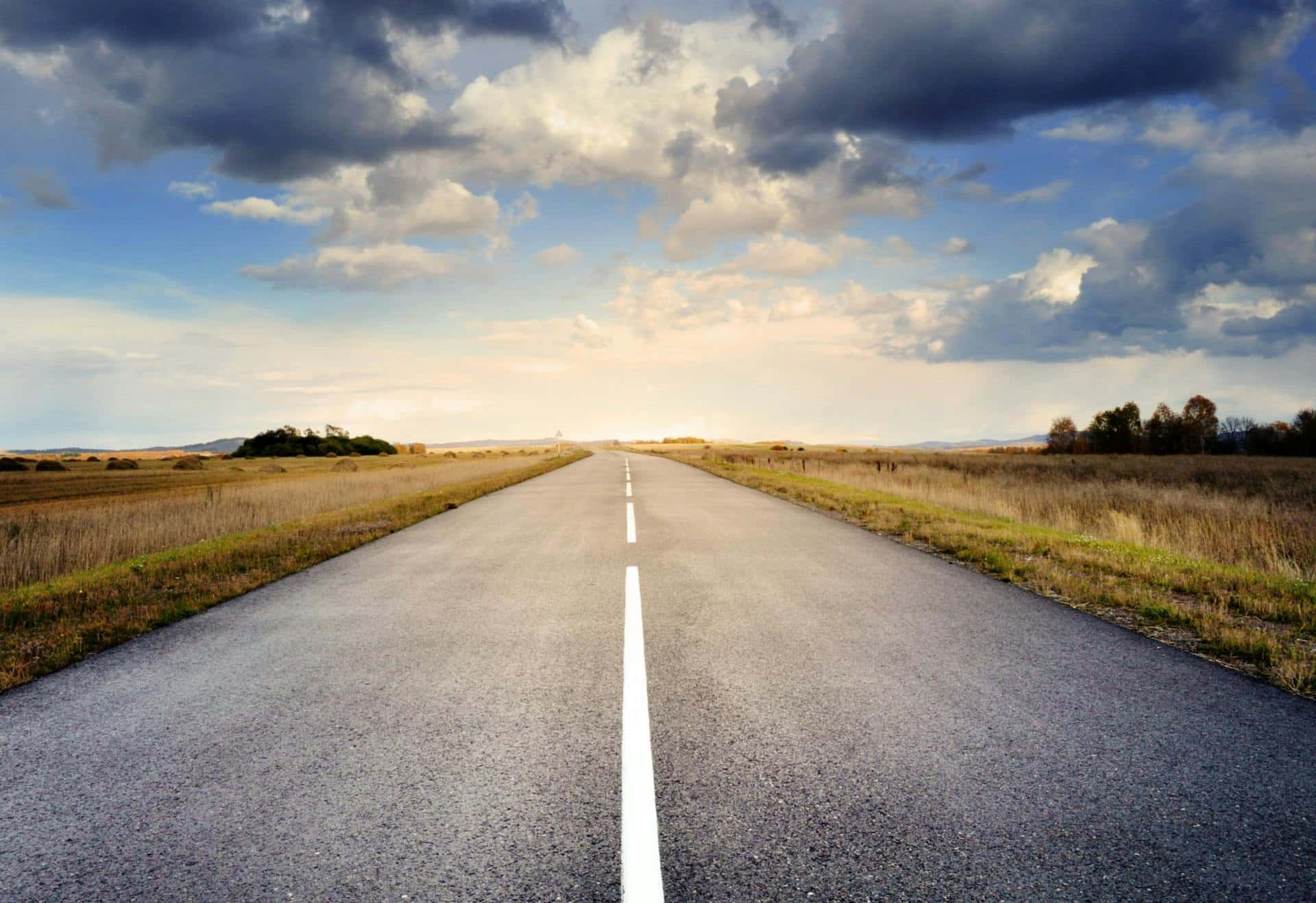
Visitors to Sabi Sand Game Reserve have the option of renting a hired car on arrival at OR Tambo International and driving to the game reserve via Mpumalanga Province:
OR Tambo International Airport to Shaw’s Gate:
5 hours (440 kms) via N12 and N4 from OR Tambo International Airport
OR Tambo International Airport to Gowrie Gate:
5 hours 40 minutes (470 kms) via N4 from OR Tambo International Airport
Chitwa Chitwa is located in the north of Sabi Sands. The closest entrance is Gowrie Gate which is close to Orpen Gate of the Kruger National Park.
Chitwa Chitwa is a scenic 3-hour drive from Nelspruit and about 2 hours from Hoedspruit. Road transfers from Hoedspruit can be arranged by Eastgate Safaris. Visit www.eastgatesafaris.co.za for more information.
SABI SANDS ACCESS GATES
The Sabi Sands has three access gates:
Shaw’s Gate: Open from 05H00 to 22H00
Newington Gate: Open from 05H00 to 22H00
Gowrie Gate: Open from 05H00 to 22H00
Check with the safari lodge you are staying at to find out which access gate you must use.
SABI SANDS GATE FEES
Visitors staying at a safari lodge in Sabi Sands Game Reserve are required to pay a vehicle entry fee as well as a per person fee. Credit cards are accepted at all Sabi Sand entrance gates. Only South African Rand is accepted if paying in cash.
TRAVEL & BOOKING INFORMATION
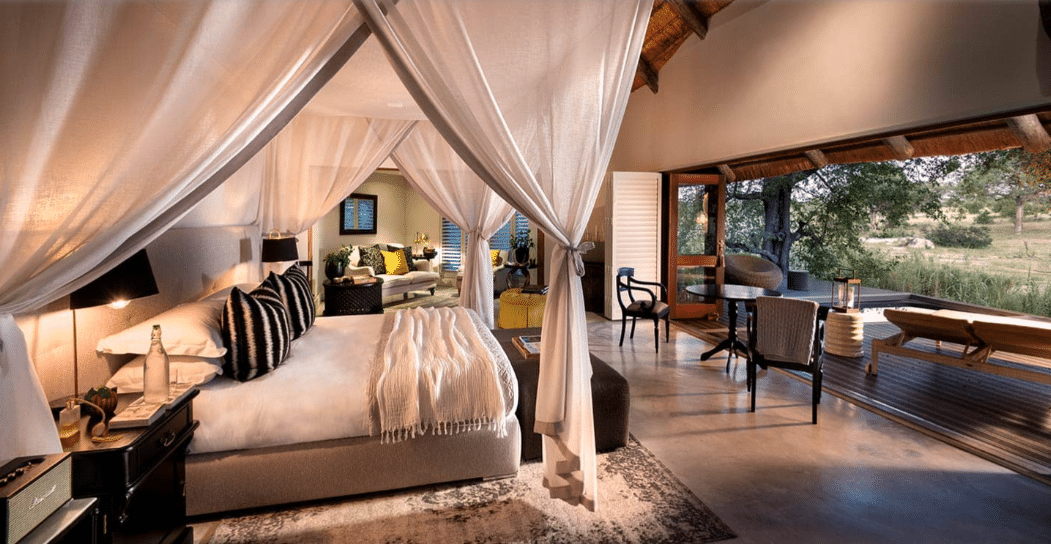
WEATHER IN SABI SANDS
Chitwa Chitwa Game Reserve falls within the Greater Kruger National Park which experiences a sub-tropical climate. The region is a year-round destination and the timing of your visit largely depends on what you’d like to see and do in the nature reserve.
October to April
The rainy season is in summer which is October to April; peaking late December to end February.
Daytime temperatures can reach highs of 30°C plus and the evenings cool down to bearable levels.
The bushveld is lush and verdant and birdlife is prolific but this is not the best time for game viewing because the bushveld is thick and animals have access to water deeper in the bush.
May to September
The winter season is between May and September and this is the best time for game viewing because the grass is dry and thinned out which makes it easier to spot game and the animals tend to congregate on riverbanks and waterholes during the dry season.
Day temperatures are usually warm and mild in the bushveld with infrequent cold fronts moving through bringing colder weather. Winter evenings get very chilly and you need warm clothes, gloves and beanies for the evening game drives.
BEST TIME TO VISIT CHITWA CHITWA LODGE
For the ultimate safari experience with exceptional sightings of wildlife, choose the dry winter months from May to October to visit Chitwa Chitwa in Greater Kruger National Park. This is the best time for game viewing and the risk of malaria is greatly reduced in the colder months.
Bird lovers prefer the summer months from October to April to visit the Greater Kruger National Park because an array of bird species fly to the reserve to wait out the cold European winters.
This is also the time most animal species give birth to their young; at the start of the rainy season. The bush is teeming with newborn animals which in turn draws out the big cats and predators.
CHITWA CHITWA RATE INCLUDES
- air-conditioned en-suite luxury accommodation
- all meals and snacks
- soft drinks and bottled water plus tea and coffee(excluding premium or international brands)
- two game drives per day in an open safari vehicle
- hosted by a professional game ranger
- daily guided bushwalks
- laundry service
- return transfer to Chitwa Chitwa airstrip
- financial contribution to The Chitwa Trust
- Chitwa Chitwa offers an all-inclusive rate which includes local beer and spirits and local wines from the Chitwa House Wine Selection.
CHITWA CHITWA RATE EXCLUDES
- scheduled flights and transfers to/from the Greater Kruger National Park
- airport taxes and Sabi Sand entrance fees and conservation levy
- items of a personal nature and purchases from safari boutique
- spa treatments
- gratuities (welcomed but optional)
- Sabi Sands entrance fees and a conservation levy
- The standard rate excludes alcoholic beverages.
ARRIVALS & DEPARTURES
- Check-in time: 14h00
- Check-out time: 11h00
CHILD POLICY AT CHITWA CHITWA
- Children who have not yet turned 3 by the date of arrival stay free of charge
- Children 3-5 years are charged 25% of the full adult rate
- Children 6-11 years are charged 50% of the full adult rate
- Children 12 years and older sharing pay full adult rate
- Children younger than 6 years are not be permitted on game drives.
- Children aged 6 to 12 years are permitted on game drives at the discretion of the game ranger.
ACCESS TO WI-FI
Chitwa Chitwa has internet connectivity in the library. It is not available in the suites as the lodge works on the basis that guests need to put away their mobile devices and completely relax in their suites without outside electronic distractions.
Mobile connectivity and signal is often poor in the bushveld where the lodges are located.
MALARIA PRECAUTIONS
Chitwa Chitwa Game Reserve is located in the Greater Kruger National Park which is considered a low risk malaria area but it still needs to be taken seriously as malaria can be fatal if not treated immediately. Consult your GP or a travel clinic for advice on taking anti-malaria tablets. Mosquitos are more prevalent in the warm, rainy season between October and April.
In addition to taking anti-malaria tablets, precautionary measures include using a good mosquito/insect repellent (spray your room and car), sleeping under mosquito nets, and wearing long-sleeved shirts and pants as well as socks and closed shoes in the evening.
ACCESS TO MEDICAL CARE
Sabi Sands is within an hour’s drive from the nearest medical facility which is a medical clinic in Skukuza in the Kruger National Park. The on-call doctor at Skukuza will treat minor ailments and stabilise more serious conditions. Patients who need emergency medical treatment will be sent through to one of two big private hospitals in Nelspruit.




